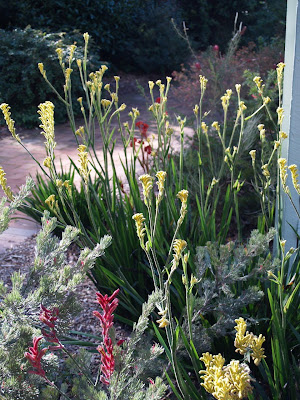Salvias have become one of the most popular garden plants because they are almost always in flower and are hardy over of a range of climates . The Riviera Sage above was still in flower in July when this photo was taken ,though the bi-coloured flowers are usually a more vibrant shade of violet and magenta during the summer. It grows to about 1.5 metres in the garden but is taller in its native habitat of Sierra Madre del Sur in the Oaxaca region of Mexico. It has been given the common name of Riviera sage because it has been grown in that part of France for decades. Like many Salvias the stems of this one are brittle so it may need a protected spot in the garden, otherwise it is both drought and frost hardy.
2017 update: I am currently out of stock.
2017 update: I am currently out of stock.







